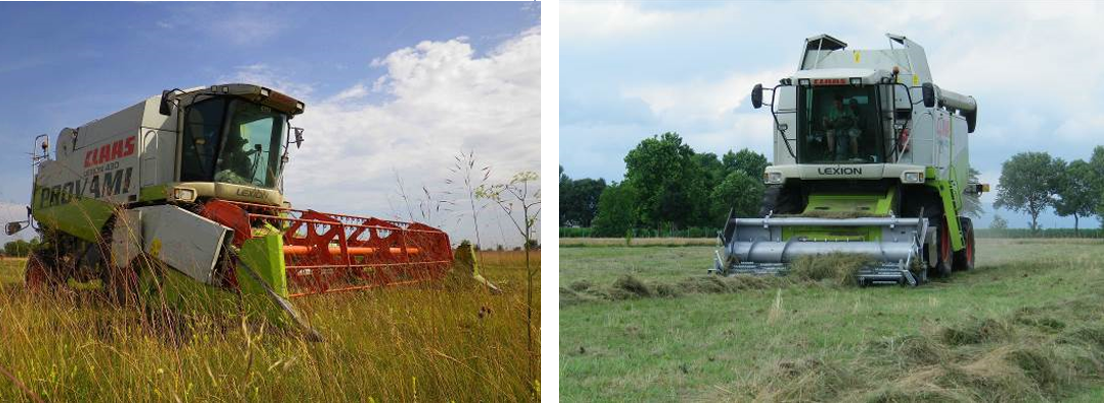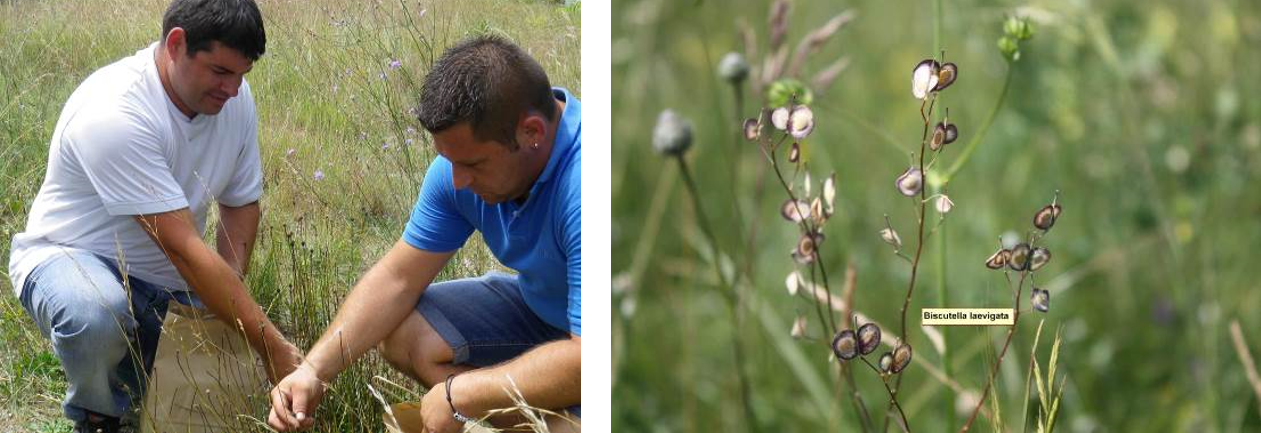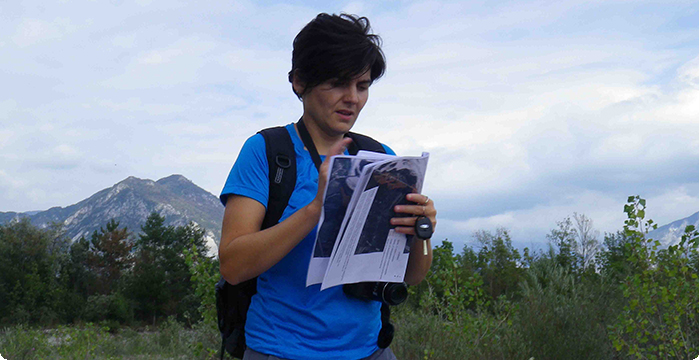BLOOMING COLLECTION
During the 2013 campaigns blooming was collected with the combine harvester carrying out the "standing" grass cutting and the separation of the seeds in a single step. From 2014 onwards it was decided to operate differently by first mowing and batching the grass on parallel rows and subsequently by threshing and separating the blooming from the grass. This operation seems having a higher yield than the combine harvesting.
The collection was performed at the almost ripeness phenological stage of Chrysopogon gryllus. Blooming Once collected was stored, dried and bagged in order to be preserved in the best way before being used for subsequent grasslands restorations.

Comparison between the combine harvesting technique (2013 campaign: blooming cutting with "standing" grass), and threshing (2014-2015 campaigns: blooming cutting mowing and raking)

Blooming drying and storage at "Brunner" barracks in Codroipo
From the beginning of the project to May 2015 approximately 160 quintals of blooming were harvested corresponding to a total area of 240 hectares. Assuming that the recovery takes an average of about 180 kg of blooming per hectare, this amount is what is needed for the seeding and restoration of about 90 hectares of grasslands.
| year | yield (qls) | collection place | collection area (ha) | useful for the recovery of ha |
|---|---|---|---|---|
| 2013 | 70 | Codroipo, S. Quirino, Dandolo, Tauriano | 90 | 39 |
| 2014 | 17 | Codroipo, S. Quirino, Dandolo | 50 | 9 |
| 2015 | 72 | Codroipo, S. Quirino, Dandolo | 100 | 40 |

Blooming collection areas in Codroipo (1) 10 ha, S. Quirino (2) 10 ha, Tauriano (3) 15-20 ha, Dandolo (4) about 70 ha
SEEDS HARVESTING
In addition to the blooming mechanical harvesting needed by the sowing of large areas to be restored, the project also provided for the manual sampling of seeds suitable for cultivation in the nursery (ex situ) in order to establish a seedbed (plants to be used for the production of seeds and seedlings for transplanting on retrained surfaces in order to enrich grasslands with the most valuable native and rare species).
The harvesting campaigns and the subsequent cultivation in the nursery from 2012 to date have allowed the production of more than 60,000 seedlings of which 6,000 belonging to the rarest species (species listed in the Appendix II of "Habitat" Directive).
Some of these have already been planted (transplanted in areas affected by restorations). Despite the many difficulties related to external disturbing factors (droughts, grazing and uprooting by wild animals) many of them have managed to take root and to enrich with their presence the surfaces newly restored.

Seeds manual collection and detail of Biscutella laevigata, one of the target species









